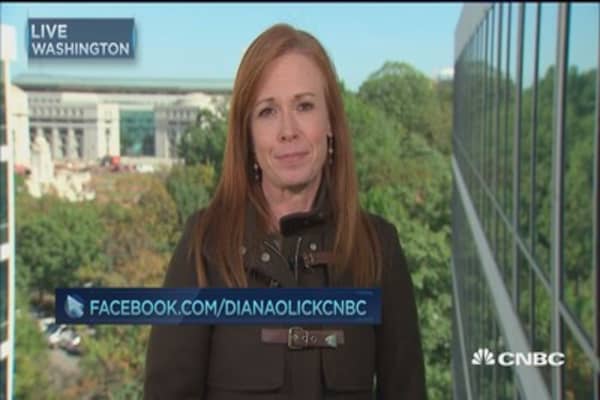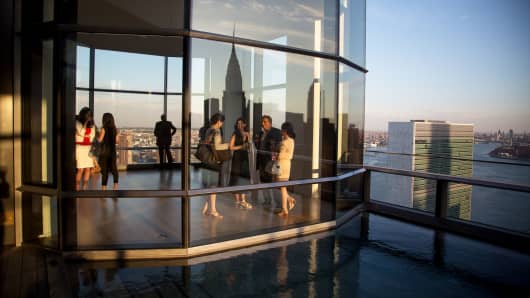
For the last four years the skies of major U.S. metropolitan housing markets have been littered with cranes.
As the homeownership rate fell following the recession, the towers rose — the vast majority boasting luxury rentals, complemented by high-end amenities like rooftop dog parks, fitness centers, private movie theaters and party rooms.
Now all that construction has largely come on line, and sky-high rent growth is officially shrinking.
“The group is slowing,” said Alexander Goldfarb, a multifamily REIT analyst with Sandler O’Neill. “2015 was abnormally strong with a re-acceleration after recession. This year was the give back.”
The average rent nationally in the third quarter was $1,289 per unit per month, compared with $1,251 in the third quarter of 2015. While that was a 3 percent annual increase, it was more than 2 percentage points below the 5.2 percent rent growth of one year ago, according to Axiometrics, a provider of apartment and student housing market intelligence. This drop is being driven almost entirely by cooling on the luxury end.
Rent growth has now been shrinking each quarter for a full year. In some of the hottest markets, the swiftness of the turnaround came as a surprise. San Francisco in particular saw the rental market cool dramatically, with rents now falling 0.5 percent annually after double-digit gains just a few years ago.
“Job growth isn’t bad in the Bay Area and New York, though the rate has slowed over the past year, so demand for apartments is still relatively strong,” said Jay Denton, Axiometrics senior vice president of analytics. “However, the amount of new supply that has been and will be delivered to these markets is extremely large and is forcing owners and developers to keep rents lower than they would like so they can remain competitive.”
Multifamily construction quadrupled since 2010, peaking in the summer of last year but still elevated. Developers focused on the high end because construction and land costs were so high and that was the only way they could make a reasonable profit. Demand in major cities also gained strength, as millennials finally moved out on their own, preferring the sociability and walkability of urban cores.
Occupancy, while still historically high, is also falling, at 95.1 percent in the third quarter, compared with 95.2 percent in the second quarter and 95.4 percent in the third quarter of 2015.
“Supply and demand are mostly in balance, but where it’s not tends to be in urban cores priced near the upper tier pricing in the market. It has to do a lot with the demand pool. Only so many people can afford that type of product and that rent,” added Denton.
Top markets for rent growth are Sacramento (11.9 percent), Riverside (7.9 percent), Seattle (6.7 percent), Salt Lake City (6.7 percent), Phoenix (6.4 percent), Las Vegas (5.7 percent) and Fort Worth (5.6 percent), according to Axiometrics.
Multifamily construction is now slowing, but there are still thousands of high-end units coming on line. Analysts expect rents will continue to moderate on the highest end, which will trickle down to other, slightly older apartments.
“Market conditions in the apartment market softened a bit in the third quarter, a period they generally see the highest activity and strongest rent growth,” said Barbara Byrne Denham, an economist with Reis, a commercial real estate analytics firm. “Evidence that recent multifamily permits have slowed considerably suggests that developers, and likely lenders, are concerned about leasing the plethora of units expected to come online in the coming year or so.”
Investors, meantime, have been pulling away from the REIT sector as a whole lately after a long and robust run. REITs, which offer high dividends, had been a strong play in a low-yield environment. Even just the talk now of higher interest rates has caused investors to flee the sector.
source”gsmarena”





